Speed_Control_-_AC_and_DC_Motors.pdf
Transcript:
[0m:4s] Hi I'm Josh Bloom, welcome to another video in the RSP Supply education series. If you find that these videos are helpful to you, it certainly helps us out if you could give us a big thumbs up and subscribe to our channel.
[0m:15s] In today's video, we are going to be talking about electrical motors. More specifically, I want to discuss some of the basic differences and how we control speed in both AC and DC motors.
[0m:29s] The purpose of this video is to give you a basic understanding of speed control with electrical motors in preparation for some future videos in which we will go into this topic in much more detail, specifically on VFDs or variable frequency drives.
[0m:47s] As I just mentioned, today we will be discussing some of the basic differences and how we control speed of these electrical motors. So let's jump right into it.
[0m:56s] First let's talk about DC motors.
[0m:59s] There are three basic ways in which you can control speed in a DC motor.
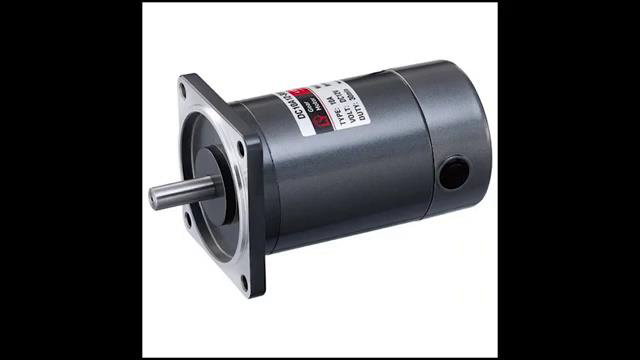
[1m:5s] The first method is by varying the supply voltage to the motor itself.
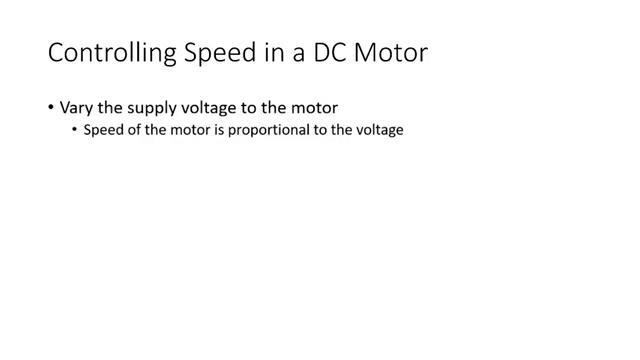
[1m:11s] Because the speed of the motor is directly proportional to the supply voltage provided, we know that by simply altering the input voltage to the motor, we can alter the speed.
[1m:24s] The second method is sometimes known as the flux control method, in which the magnetic flux, which is a measurement of the total magnetic field which passes through a given area,
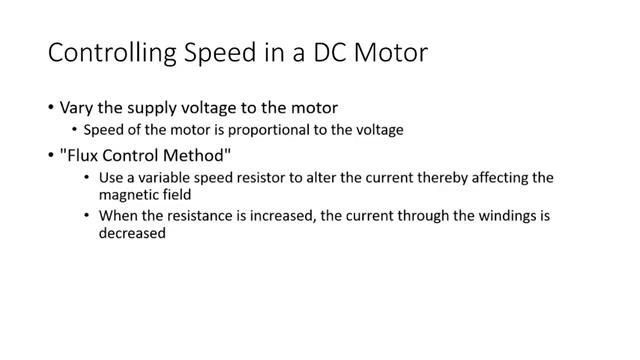
[1m:37s] is determined by the incoming current to the field windings in the motor. This current can be varied by using a variable speed resistor.
[1m:48s] So when the resistance is increased, the current through the windings is decreased, which in turn reduces the flux that is being produced.
[1m:58s] Because of this reduced magnetic flux, we see the motor increase in speed. The last method that is commonly used is known as armature control method.
[2m:10s] In this method, the speed of the DC motor is controlled by controlling the resistance that is seen in the motor’s armature, which can control the voltage drop across the armature.
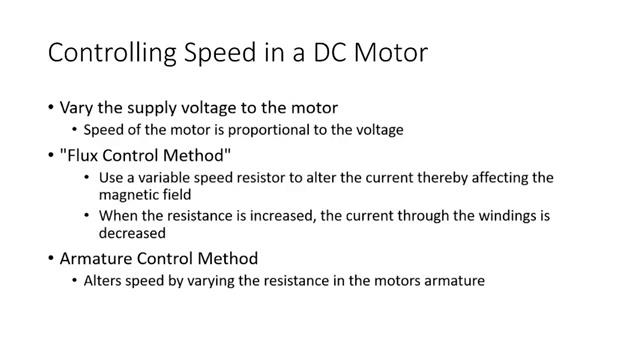
[2m:23s] This method will also use a variable speed resistor,
[2m:28s] but it is used in a different way to achieve this result.
[2m:31s] So when the resistance increases across the armature, the voltage will decrease which will then lead to a decrease in motor speed.
[2m:41s] These are again the three main methods that are used to control speed in a DC motor.
[2m:46s] Now let's talk about AC motors. There are a few ways in which you can control the speed of an AC motor, such as changing the number of poles, which can be very inefficient and is not as common,
[2m:59s] or also by changing the slip of the motor, which again is not as common.
[3m:4s] The method that is, by far most commonly used is to alter the frequency of the AC signal.
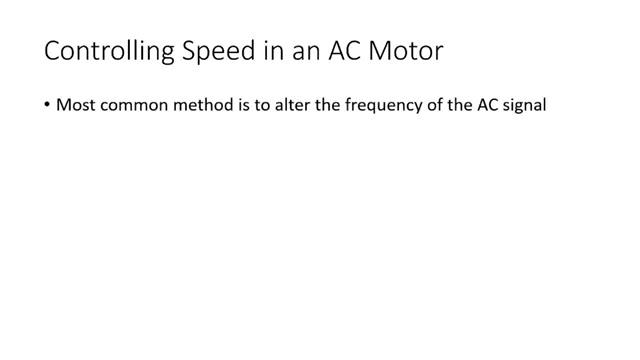
[3m:12s] There are several ways that you can accomplish this frequency change, such as using inverters, using a VFD or variable frequency drive, or an ASD adjustable speed drive.
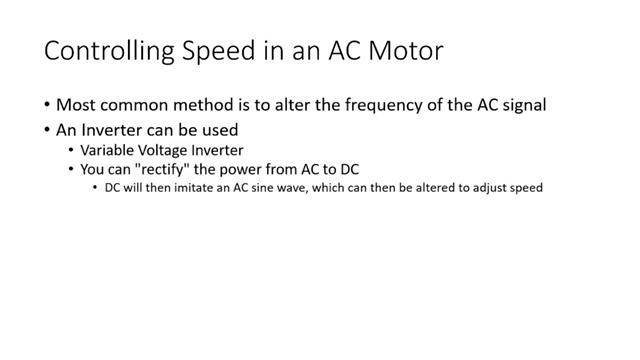
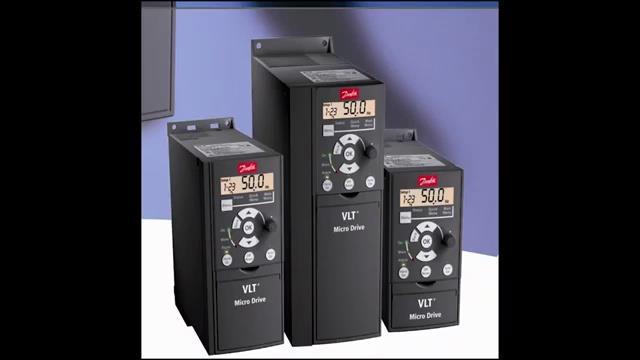
[3m:25s] Let's talk about a few of these methods to provide a little more clarity so that you can better understand each of them. By using an inverter, more specifically a six step inverter or variable voltage inverter, you can change or rectify the AC power to DC, and then the DC is made to imitate an AC sine wave, which can then be altered to adjust the frequency, and therefore the speed of the motor.
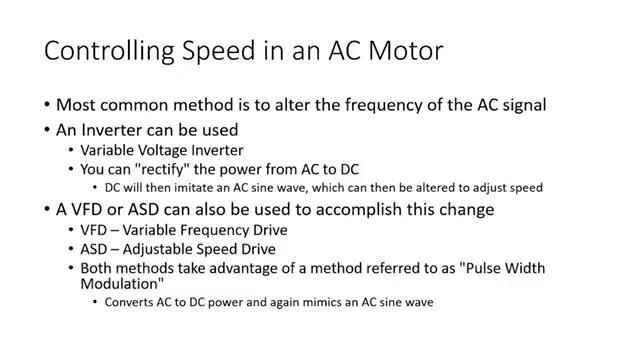
[3m:55s] Another common method that is used is referred to as pulse width modulation which many VFDs take advantage of,
[4m:4s] which takes AC power and converts it to DC power, and then the DC power is switched on and off at a certain voltage. The pulse width, which is the amount of time that the voltage is switched on or off, is changed rapidly to simulate an AC sine wave.
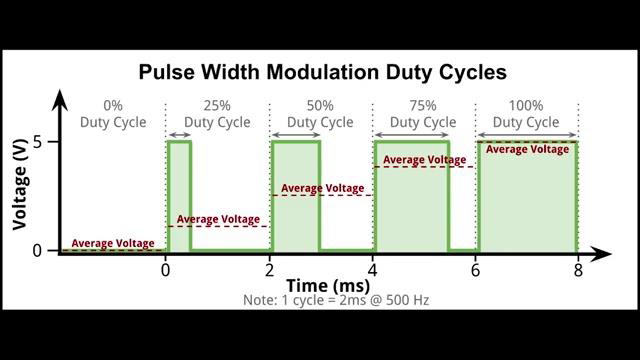
[4m:22s] This control allows the user to adjust the frequency of the simulated sine wave then altering the speed of the motor.
[4m:32s] There are other methods that can be used to adjust the speed of an AC motor which we will not cover in this video.
[4m:38s] Although, AC and DC motors can produce very similar results in regards to how they perform, the way in which they function and are controlled can be quite a bit different because of the type of power in which they use.
[4m:54s] In general, AC motors are less expensive and more common in most industrial applications. It is because of this that we will focus more on controlling AC motors in future videos. For a full line of industrial motor control equipment and thousands of other products, please go to our website. For more information or other educational videos, go to RSPSupply.com, the Internet's top source for industrial hardware. Also, don't forget: like and subscribe.




